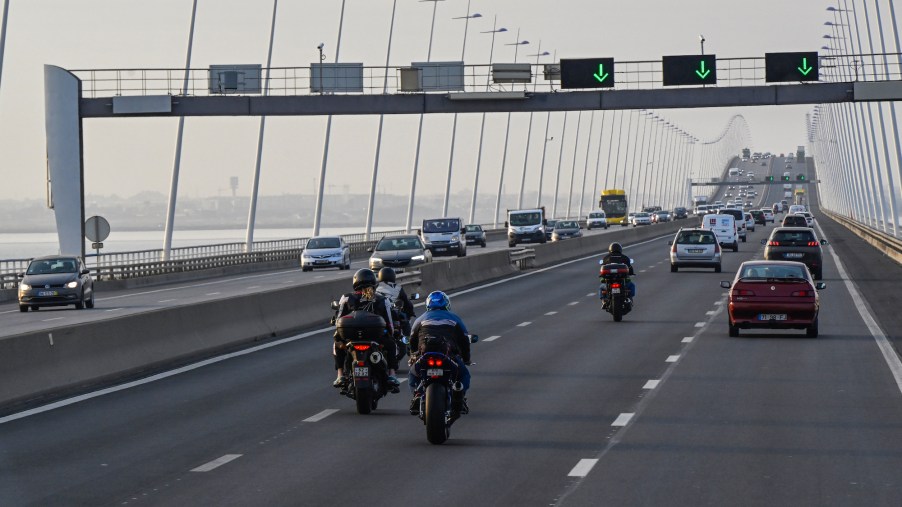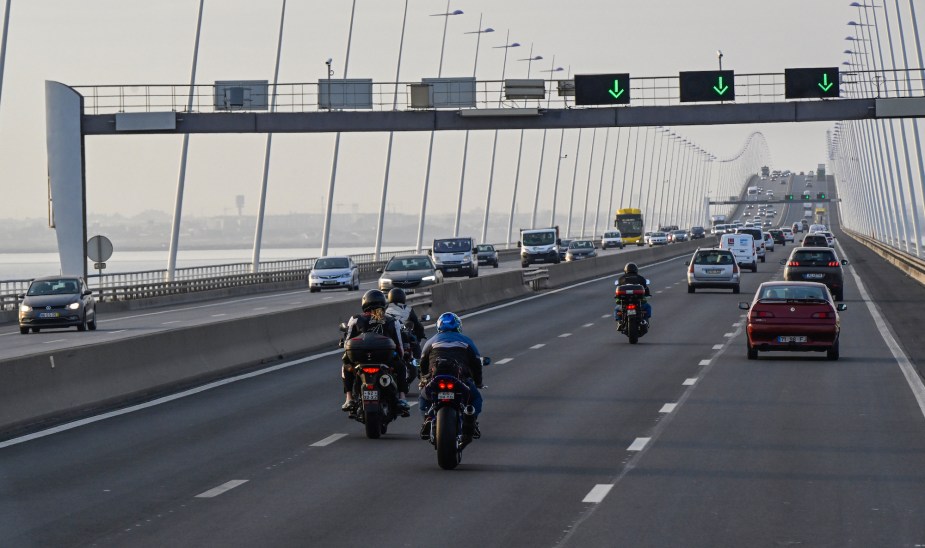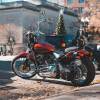
6 Tips to Remember When Riding a Motorcycle in High Winds
Driving motorcycles can be a way of life. However, these vehicles require you to be more aware of your surroundings and weather conditions. For example, motorcycles are smaller than cars and more susceptible to the wind. You should use extra caution driving behind or to the side of large trucks or buses due to the excessive wind they create while driving, particularly at high speeds. Here are some tips on how to ride when faced with the wind.
1. Take note of your surroundings

Erie Insurance reminds us that determining the direction of the wind is paramount to safety during these conditions. Pay attention to the movement of trees and grass around you, as well as the clouds in the sky. You can also gauge which way the wind is blowing by looking at objects like flags or weather vanes.
It’s also important to put a little more distance than usual between yourself and other cars as wind occurs while driving behind or to the side of cars. If the wind sets you off balance, you’ll have a better opportunity to readjust yourself without causing a collision.
2. Keep yourself small
When driving through severe wind gusts, your arms and legs should be as close to your body as possible. Also, make sure you keep your head ducked down. Always keep your head and limbs as much behind your bike’s windshield as possible, if you have one.
The goal is to reduce the amount of surface area the wind can manipulate. That also means leaving any loose items or tail bags at home. Avoid wearing loose-fitting clothing, like scarves, and keep your jacket zipped up.
3. Relax your muscles when riding a motorcycle in high winds
Driving during high winds can be both mentally and physically draining, but keeping your cool will get you through the situation quickly. If your body is too tense, you’re more susceptible to the wind altering the direction of your handlebars.
Relaxing your body will keep you from getting too fatigued. Keeping yourself small may be a good strategy during windy weather, but it can also strain your neck and shoulders. Unclench your jaw, loosen your arms, and don’t grip the handlebars harder than necessary.
4. Follow the direction of the wind
You should always lean your bike in the direction of the wind when caught in a crosswind. If it’s safe to do so, you can also shift the weight of your body in that direction as well.
Still, a sudden change in wind speed always has the potential to blow you off course. If that happens, use the push-steering method in the opposite direction of the wind to get back on track. Just be careful not to overcorrect when doing so.
5. Stick your knee out
Just like a sail can keep a boat from blowing off its course, your knee can counteract the wind’s effects on your bike. Angle your knee into the corresponding direction of the crosswind.
6. Pull over and rest
Even if you’re as relaxed as possible, riding in high winds for several minutes will inevitably take its toll. Know your limits, and don’t try to push them. If your limbs are feeling shaky or start to ache, find a safe area to stop.
You can also give yourself a brief respite from the wind by driving behind bigger cars or between two buildings. With the wind blocked off your bike, you’ll have time to collect your bearings before pressing onward.
In addition to following these tips, we recommend always wearing an appropriate amount of safety gear. That includes a full-face helmet, padded gloves, and a durable riding jacket. A quality pair of motorcycle pants can also help deflect strong wind gusts.


